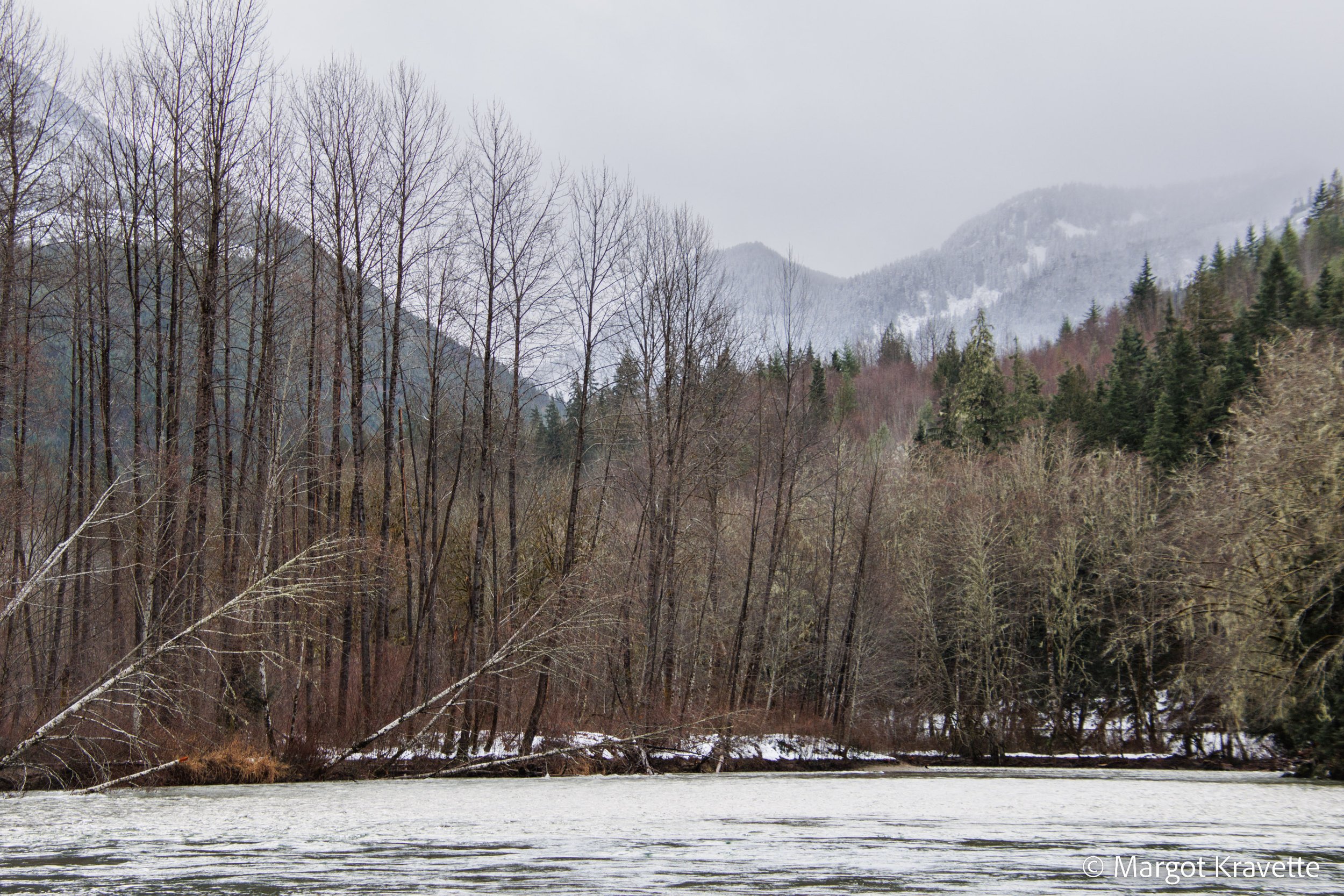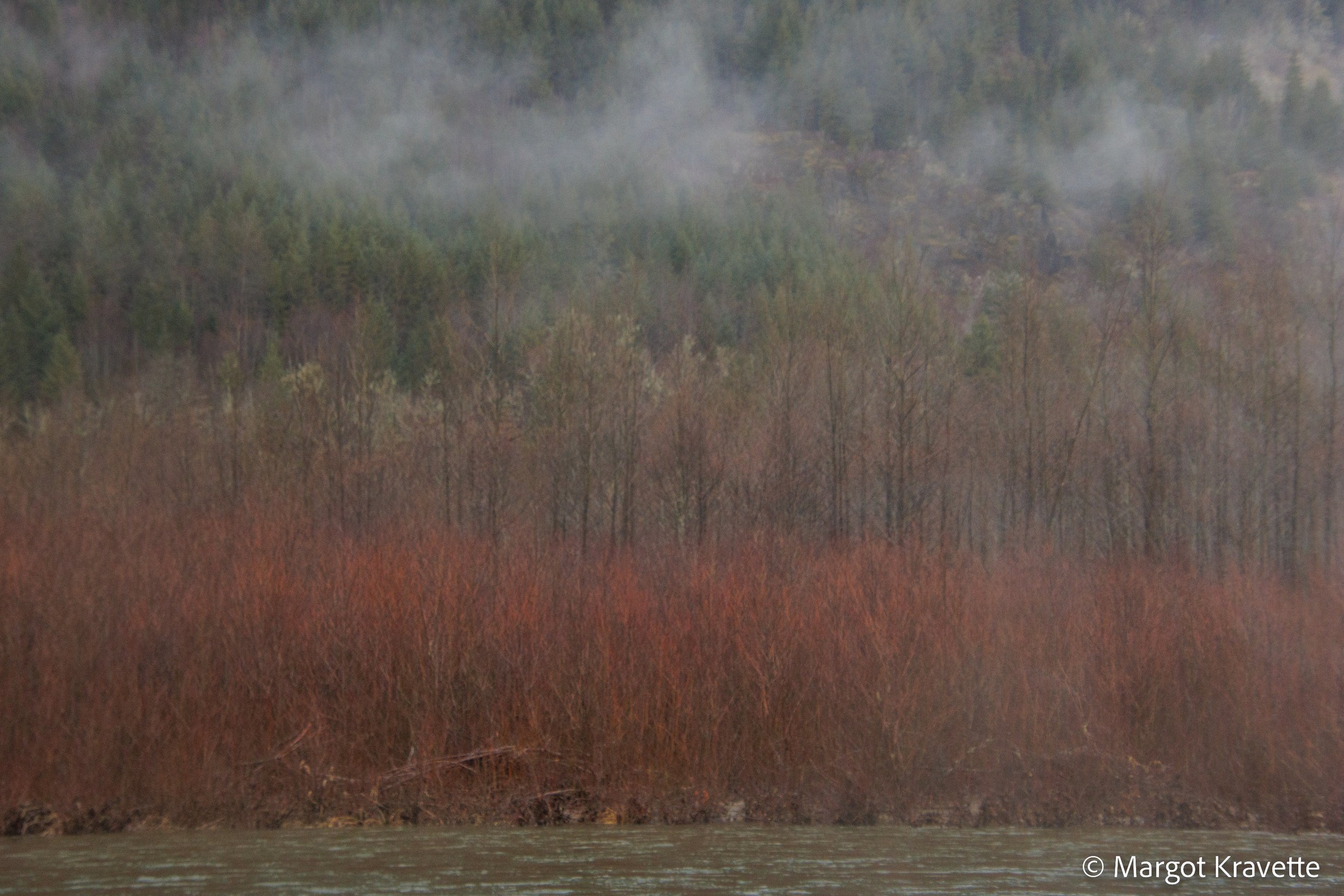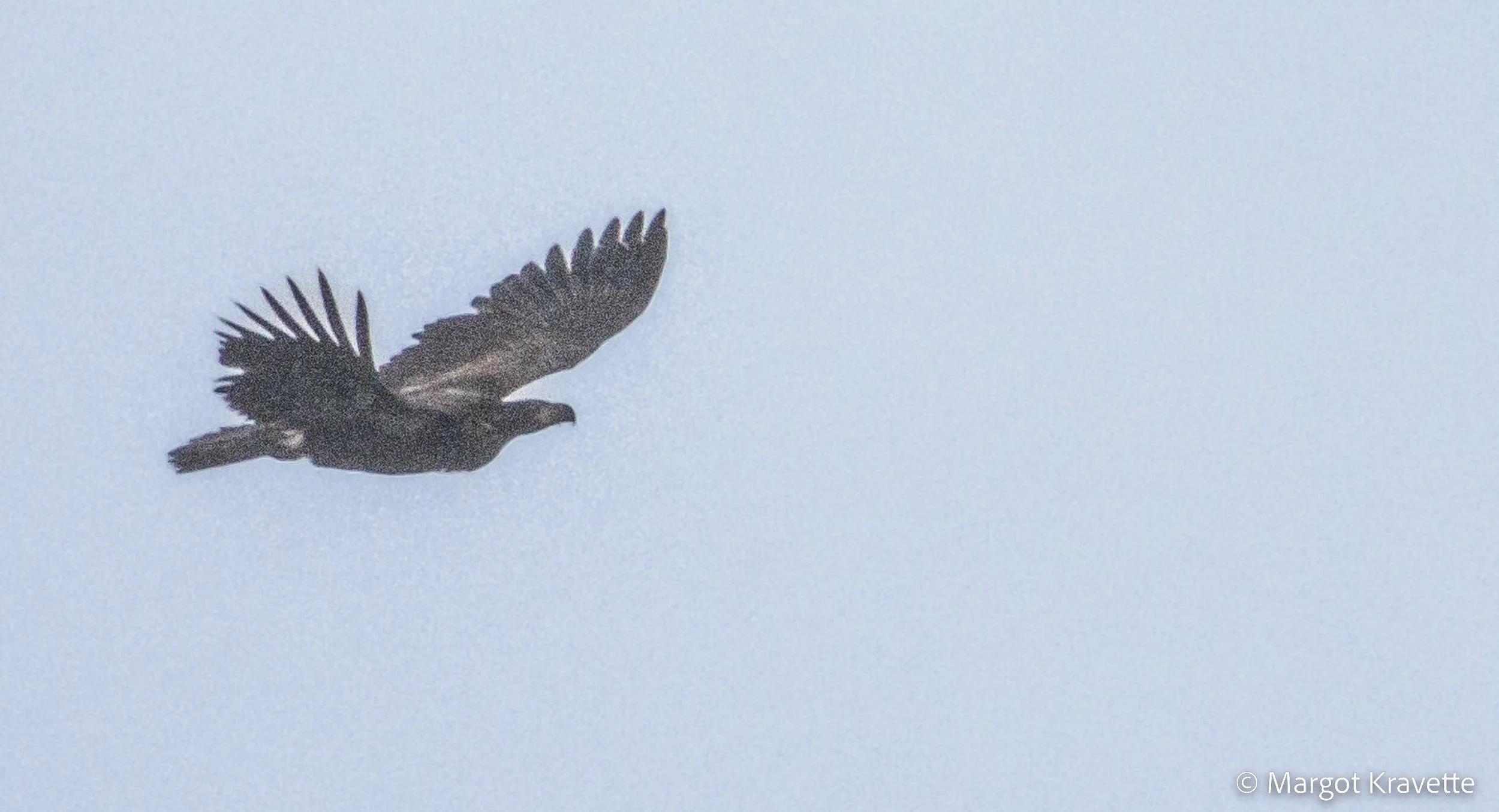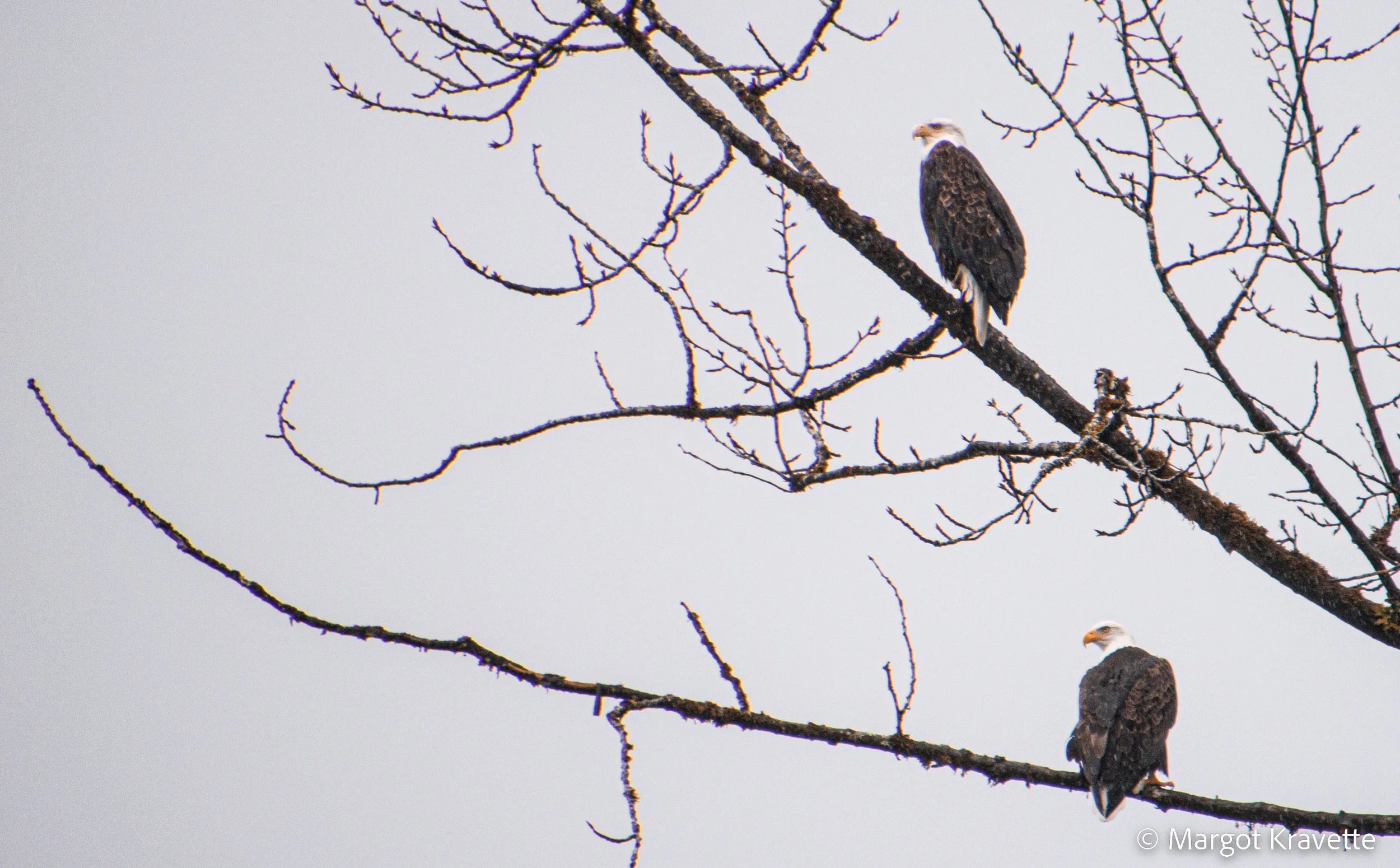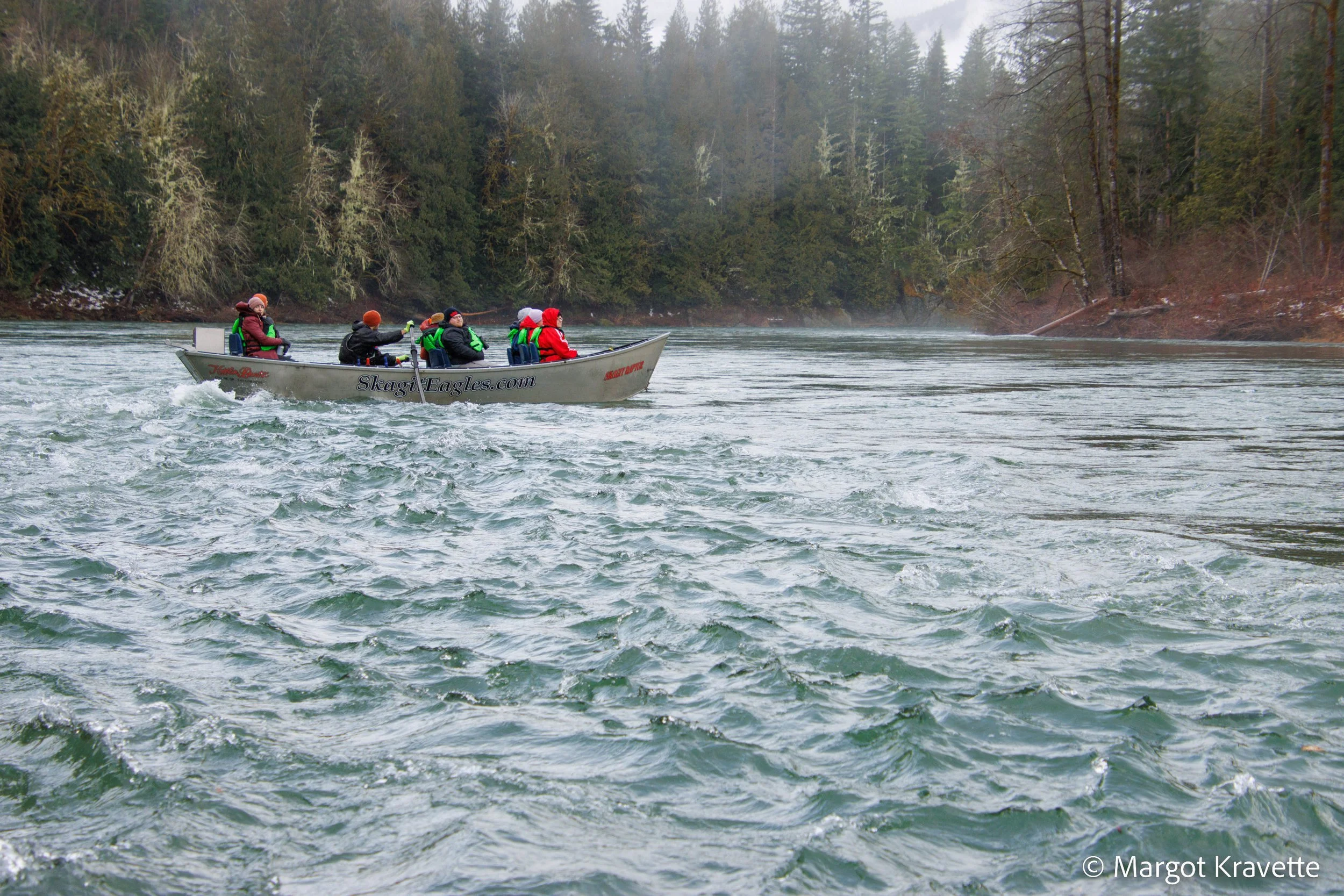Skagit River Eagles
From the time I’d heard about the bald eagles that come to the Skagit River each winter it’s been on my list of things to see them for myself. The area between Concrete and Marblemount, along the Skagit River, is the second largest eagle gathering in the United States after Alaska. There are several opportunities to view the eagles there and in other places around the state. You can go on a guided walking tour from the Skagit River Interpretive Center in Rockport that take place between mid-December and the end of February. You can go on your own at locations listed on the Interpretive Center’s Website. I chose to do a float trip down the Skagit River with Skagit River Eagle Tours who offers twice a day 9-mile trips down the river, 7 days a week beginning in November through most of January.
The Skagit River starts high in the Cascade Mountains and empties into Puget Sound. It feeds one of the richest agricultural areas in the world, the Skagit Valley. Three rivers flow from the Skagit – the Sauk, Cascade and Suiattle. Known for bald eagles, salmon and steelhead, it is one of the only rivers in the continental United States that contains all five species of salmon.
In 1968 the National Forest Service established the Wild and Scenic River designation because of the damage that damming, development and diversion were causing to the nation’s rivers. “To qualify, rivers or sections of rivers must be free-flowing and possess at least one outstandingly remarkable value (such as scenic, recreational, geologic, fish, wildlife, historical, cultural, or other similar features).” In 1978 Congress named the Skagit Wild and Scenic River to the national system. The Skagit’s 158 miles, from Sedro Wooley to the Ross Lake National Recreation Area meet the criteria because of its abundant wildlife, exceptional fisheries, and outstanding scenery, flowing through forests, valleys, rural communities, and hillsides. But 50% of its flow goes through private lands, leaving the Forest Service with no authority over those lands as it does for the rest of the river.
This is the best time of the year to see the eagles, as they enjoy gobbling up salmon carcasses that are most plentiful on the water after they’ve spawned. Although salmon and trout are their favorites, eagles also enjoy eating birds such as ducks, herons, owls and geese. In the winter they are known to hunt small mammals such as rabbits, squirrels and raccoons.
When settlers arrived in Washington State in the 1700’s, there were an estimated 9,000 bald eagles. In the 1950’s they were practically wiped out as a result of the introduction of pesticides that lead to their rapid decline. Once DDT was banned in 1972 the eagle population started to turn around. Although their residents grew from 104 in the 1980’s to 840 in 2005, it wasn’t until 2007 that they were removed from the Federal Endangered Species list and from the Washington State Protected Species List in 2016. Although there are 60 species of eagles in the world and four in Washington, only two, the Bald Eagle and Golden Eagle, have been seen in our state.
The bald eagles can actually be seen in Washington year-round but are more populous in the winter when they come down from Canada and Alaska to stay warm and to find food. They grow to be two to three feet long with a wing span of up to six and one half feet. Eagles have a white head and tail, yellow eyes and legs, and a large hooked yellow bill. Their bodies are brown, often with white markings with little difference between genders. The heads of younger eagles are darker, as their white crown develops as the bird matures. Female eagles are larger by 3-5 inches and their beaks are longer than males. Males are more aggressive and have a higher pitch voice than females.
A piece of trivia: Although bald eagles have been the national symbol of the United States since 1782, they are not actually bald. The old version of “bald” actually meant “white”, referring to its white head.
We met our guides in Rockport at the Howard Miller Steelhead Park, a good 37 miles from I-5 at Burlington. Also located in this park is the Skagit River Interpretive Center which provides education about the Skagit River ecosystem and eagle awareness. The 18 people registered for our trip were taken by an old school bus to Marblemount, 9 miles up the river, where we would put in the water. Luke, the senior leader among the three, was very thorough about what to expect and safety issues we might encounter. Our group was divided among three heated “driftboats”, each with six high-backed, very comfortable cushioned seats that swiveled 360 degrees, which was a real advantage for those of us taking photos and needing to change direction quickly. As we floated down the nine miles from Marblemount to Rockport Luke was full of interesting tidbits about the river and the eagles.
The weather was cold and rainy, the river was quite choppy, and the eagles spent most of their time perched on branches in tall, mature trees. These were not the most ideal situations for photographing eagles. Everything I read about photographing these birds must have been written by photographers who were on their feet, not on the water.
Despite the disappointing conditions, we saw over 100 bald eagles, most of whom were very content sitting alone on high branches, keeping their eyes on things happening around them. And wearing just the right clothing kept me warm enough so I could enjoy the beauty of the Skagit River and the majesty of the eagles. I’d do it again anytime.



